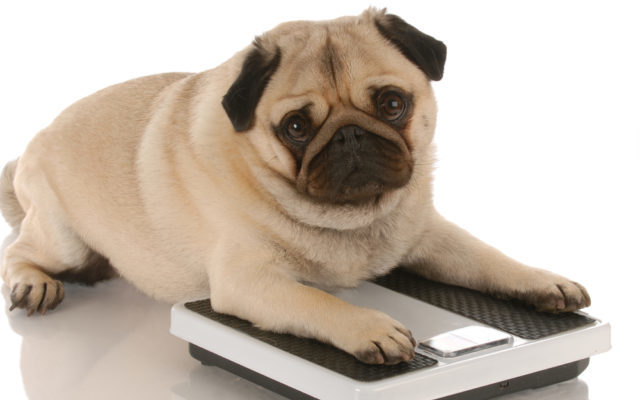Our dogs are more than just pets; they’re cherished family members who share our homes, our hearts, and often, our lifestyles. Unfortunately, this means they can also share in our less healthy habits, leading to a growing epidemic of overweight and obese canines. Just like their human counterparts, dogs who carry extra pounds are at an increased risk for a myriad of health issues, including diabetes, heart disease, joint problems, and a decreased quality of life overall.
While those extra rolls and adorable waddle might seem harmless, the reality is that excess weight puts a significant strain on your dog’s body, shortening their lifespan and increasing their risk of chronic conditions. The good news is that with a few simple adjustments to their diet and exercise routine, you can help your furry friend shed those unwanted pounds and live a longer, healthier, and more vibrant life.
7 Vet-Approved Tips to Guide Your Dog’s Weight Loss
1. Calculate Caloric Needs

A little extra kibble here, a few extra treats there – no big deal, right? Wrong! Calories have a way of adding up, especially when the one over-indulging only weighs 30 pounds.
The feeding guides on dog food labels tend to overestimate how many calories dogs need each day. In fact, according to Dr. Ward, they are based on the requirements of adult, unaltered (not spayed or neutered) dogs with active lifestyles. This may work for police pups and herding dogs, but not your average leisure pooch.
If you are following the guidelines on your dog’s food bag, you could be feeding 20% to 30% too much! In addition, many well-meaning pawrents feed their overweight dogs for the weight they currently are, not the weight they should be.
To help your dog lose weight, ask your veterinarian to determine his personal caloric needs. You can also use the following formula to determine the daily calories for an average, inactive, spayed, or neutered dog weighing between 6 and 60 pounds.
-
-
- [(pet’s weight in lbs/2.2) x 30] +70 = Daily caloric intake
- Divide your pet’s weight by 2.2.
- Multiply this figure by 30.
- Add 70
-
2. Measure Meals
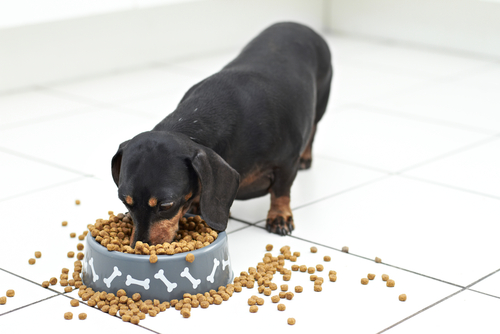
In the photo above, the dog’s bowl is clearly overfilled. While the picture is just a staged photo op, far too many pet parents keep their dogs’ bowls full at all times, allowing them to “graze” whenever the mood strikes.
“Guesstimating” how much you feed or letting dogs snack from their bowl all day long can be seriously detrimental to their health. Studies conducted by the Association for Pet Obesity Prevention have found that as few as 10 extra kibbles a day can result in a pound of weight gain per year in small dogs. That’s comparable to 10 pounds on a human.
If you want to help your dog lose weight, use the daily calorie calculation to help you determine how much to feed at each meal. Then invest in a measuring cup and use it every time!
3. Make Treats Count
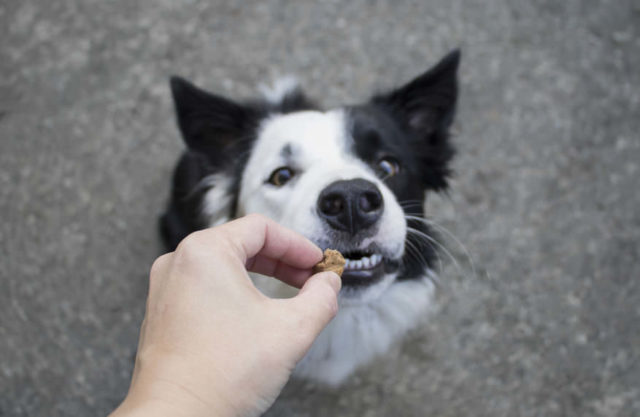
Most people read nutrition labels before purchasing a snack food, but few examine the macronutrient content of their dogs’ treats. Pet products are a $70 billion a year industry, and everyone wants a piece of the action. With the market oversaturated with options, it can be difficult to determine which are healthy.
Dr. Ward recommends bypassing cheap, processed selections that tend to be high in fat and sugar and choosing single-ingredient treats instead. Sliced sweet potatoes, fresh or frozen blueberries, and high protein choices like salmon, chicken breast, and beef livers are excellent alternatives.
Remember, every treat adds calories to your dog’s diet. If you are in the habit of giving your dog snacks throughout the day, consider breaking them into smaller pieces or cutting the amount of food you give at mealtimes to balance the scales. As few as 30 extra calories a day can not only derail weight loss but actually result in three pounds of weight gain per year.
Finally, make sure your dog earns his treats. Healthy snacks should only be offered for a job well done, such as going potty outside or following an important command. Avoid “guilt-feeding” your pudgy pooch!
4. Make ‘Em Eat Their Veggies
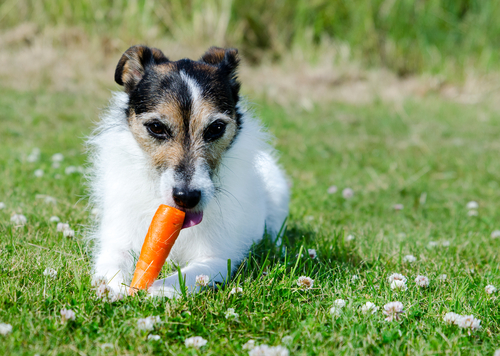
Believe it or not, many dogs thoroughly enjoy fresh vegetables. Green beans, celery, broccoli, and cucumbers may help your dog lose weight when given in place of store-bought treats. Baby carrots are another popular option, but higher in sugar than green veggies. Certain fruits like berries, sliced apples, and bananas are also safe for dogs but should be given in limited quantities due to their sugar content.
5. Get Moving
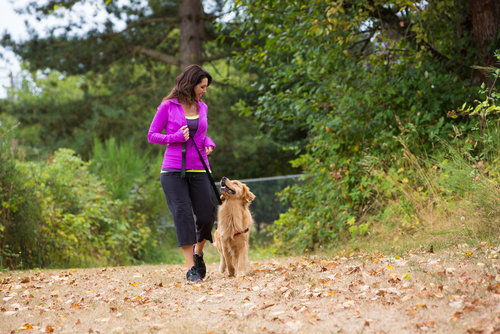
Maintaining an active dog lifestyle is important for more than just weight loss. Just 20 – 30 minutes of brisk walking is enough to boost your dog’s immune function, improve joint pain, promote heart health, and reduce certain behavioral problems.
Better still, daily walks with your dog offer many of the same health benefits for you as well.
6. Provide Healthy Supplements
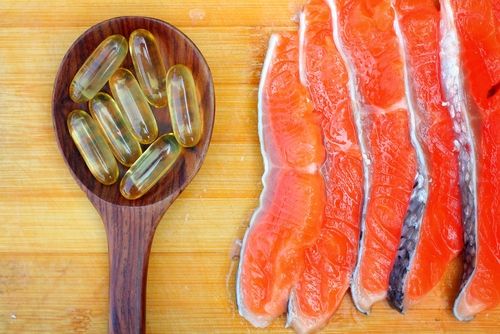
Certain dietary supplements may help your dog lose weight by easing achy joints and promoting lean muscle mass. Dr. Ward recommends omega fatty acids and L-carnitine to his canine patients.
Omega fatty acids, such as those found in Omega 3-6-9 Select Grain Free Chews, offer powerful anti-oxidants to prevent and treat disease. They also support joint, heart, immune system, and cellular health and may encourage weight loss.
Dr. Ward believes in the benefits of L-carnitine for canine weight loss and uses it himself.
“L-carnitine has been shown to aid weight loss and promote lean muscle mass in some studies,” he writes. “I’ve been prescribing (and taking) l-carnitine for over 13 years and been impressed with the results.”
Consult with your veterinarian before beginning a supplement routine to make sure you choose the best options for your dog’s individual needs.
7. Cut Down On Carbs

Wild canids such as wolves primarily eat meat and are considered carnivores by many animal researchers. While they will occasionally eat berries or ingest the stomach contents of their herbivorous prey, fruits, and grains account for only a minuscule percentage of their dietary intake.
Domestic dogs have adapted well to eating vegetation, but they still retain many of the physical and behavioral characteristics of carnivores. Just as the human digestive system has evolved beyond the hunter-gatherer diet we once subsisted on, so too have dogs adapted to digesting fruits and grains.
However, just because dogs can eat high-carbohydrate diets does not mean they should. Many commercial dog foods contain up to 60% carbs from fillers like corn and wheat. This is far higher than necessary. Dr. Ward prefers low-grain or grain-free diets with a protein source as the first ingredient. Just as in humans, cutting carbs can help your dog lose weight and build lean muscle. Lowering carbs may also improve other aspects of your dog’s health like digestion and skin and coat quality.
Frequently Asked Questions About Helping Your Dog Lose Weight
1. How much weight should my dog lose to be considered healthy?
The ideal weight for your dog depends on their breed, age, and body structure. It’s best to consult your veterinarian who can determine your dog’s ideal weight and body condition score. They can also create a personalized weight loss plan based on your dog’s specific needs.
2. What are the best types of food to help my dog lose weight safely and effectively?
Look for dog foods that are high in protein and fiber but lower in calories and fat. Avoid foods with fillers, artificial ingredients, and excessive carbohydrates. Consider switching to a weight management formula or consult your veterinarian for recommendations on the best food for your dog’s weight loss journey.
3. How much exercise does my dog need each day to reach a healthy weight?
The amount of exercise needed will vary depending on your dog’s breed, age, and current fitness level. Start with short, frequent walks and gradually increase the duration and intensity over time. Incorporate playtime and other activities your dog enjoys to keep them engaged and motivated. Consult your veterinarian for personalized exercise recommendations.
4. Are there specific medical conditions that can make it harder for my dog to lose weight?
Yes, certain medical conditions like hypothyroidism, Cushing’s disease, and osteoarthritis can affect a dog’s metabolism and make weight loss more challenging. If you suspect your dog may have an underlying medical condition, consult your veterinarian for diagnosis and treatment options.
5. What are some common mistakes people make when trying to help their dogs lose weight?
Some common mistakes include:
- Giving too many treats or table scraps
- Not measuring food portions accurately
- Not providing enough exercise
- Ignoring underlying medical conditions
- Giving up too soon
6. How can I help my dog stay motivated and engaged during their weight loss journey?
Make exercise fun by incorporating games, toys, and activities your dog enjoys. Reward them with praise, petting, and low-calorie treats for their efforts. Consider joining a dog walking group or enrolling in a dog sport for additional socialization and exercise opportunities.
7. What are some warning signs that my dog might be losing weight too quickly or unhealthily?
If your dog experiences vomiting, diarrhea, lethargy, or loss of appetite while trying to lose weight, contact your veterinarian immediately. These could be signs of underlying health problems or that the weight loss plan is too extreme.
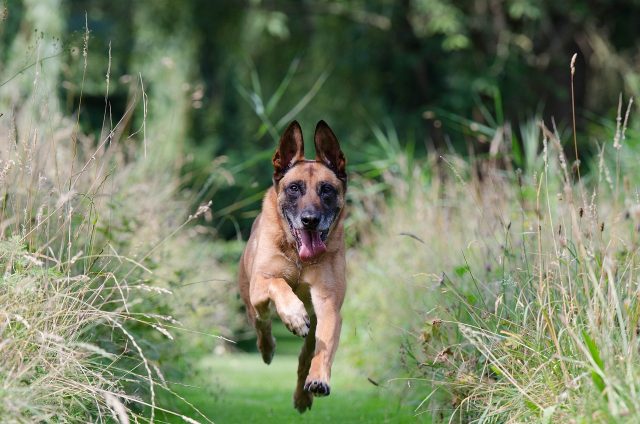
A Healthier Weight, A Happier Dog: Your Journey to Canine Wellness
Helping your furry friend shed those extra pounds is a rewarding journey for both of you. By following these vet-recommended tips, adjusting their diet, increasing exercise, and monitoring their progress, you can ensure your dog reaches and maintains a healthy weight. Remember, patience and consistency are key. Celebrate every milestone, and don’t hesitate to consult your veterinarian for personalized guidance and support. A healthier weight means a happier, more energetic, and longer life for your beloved companion.
